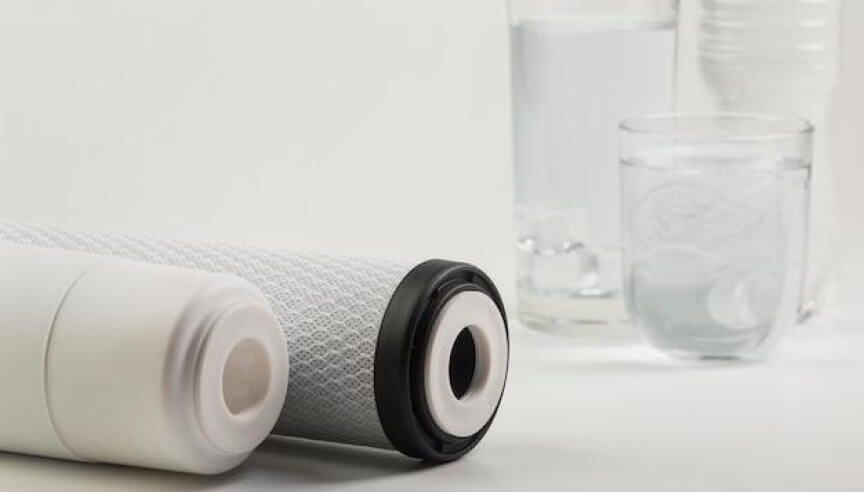Recent Posts
Membranes: Choosing the Right Type

Cleaning with Membranes: Choosing the Right Type
Membrane technology has revolutionized the field of filtration and water treatment, offering highly efficient and sustainable solutions for a variety of applications. When thinking about cleaning with membranes, it’s essential to understand the different types available and how to select the right one for your needs. Here’s a comprehensive overview of the various membrane types and guidance on choosing the appropriate type.
Types of Membranes
1. Microfiltration (MF) Membranes
- Pore Size:
0.1 to 10 micrometers - Applications:
Removal of suspended solids, bacteria, and large colloids. Commonly used in the food and beverage industry, pharmaceuticals, and wastewater treatment. - Benefits:
High flux rates and low pressure requirements. Ideal for applications needing the separation of large particles.
2. Ultrafiltration (UF) Membranes
- Pore Size:
0.01 to 0.1 micrometers - Applications:
Removal of viruses, bacteria, and macromolecules. Used in potable water production, dairy processing, and industrial wastewater treatment. - Benefits:
Can remove smaller particles compared to MF membranes, providing higher quality filtrate.
3. Nanofiltration (NF) Membranes
- Pore Size:
0.001 to 0.01 micrometers - Applications:
Softening of water, removal of divalent ions, and organic molecules. Suitable for drinking water treatment and wastewater reuse. - Benefits:
Effective at reducing hardness and removing a wide range of contaminants, including pesticides and color.
4. Brackish Water Membranes
- Characteristics:
Designed to treat water with moderate salinity levels, typically found in brackish water sources. - Applications:
Desalination of brackish water for drinking water and industrial use. - Benefits:
High rejection rates for salts and other contaminants, providing fresh water from saline sources.
5. Seawater Membranes
- Characteristics:
Built to handle high salinity levels found in seawater. - Applications:
Desalination of seawater to produce potable water. - Benefits:
High durability and resistance to fouling, capable of withstanding the harsh conditions of seawater desalination.
6. Low Fouling Membranes
- Characteristics:
Engineered to resist fouling, which can reduce membrane efficiency and lifespan. - Applications:
Suitable for a variety of water treatment processes where fouling is a significant concern. - Benefits:
Longer operational life, reduced cleaning frequency, and lower maintenance costs.
7. Low Pressure Membranes
- Characteristics:
Designed to operate at lower pressures, reducing energy consumption. - Applications:
Used in systems where energy efficiency is a priority, such as in large-scale municipal water treatment. - Benefits:
Cost-effective operation due to reduced energy requirements, making them ideal for large-scale implementations.
How to Choose the Right Type of Membrane
Selecting the appropriate membrane type depends on several factors:
- Application Requirements
Determine the specific contaminants that need to be removed. For example, MF and UF membranes are ideal for removing bacteria and suspended solids, while NF membranes are better suited for softening water and removing organic molecules. - Water Source and Quality
Assess the source and quality of the water to be treated. Brackish water and seawater membranes are specifically designed for high salinity sources, whereas low pressure membranes are suitable for large-scale municipal applications. - Operational Conditions
Consider the operational conditions such as pressure, temperature, and potential fouling. Low fouling membranes are ideal for environments prone to high fouling rates, and low pressure membranes help in reducing energy consumption. - Economic Factors
Evaluate the cost implications, including initial investment, operational, and maintenance costs. Low pressure membranes offer lower operational costs due to reduced energy usage, while low fouling membranes can decrease maintenance expenses. - Regulatory Standards
Ensure compliance with local and international regulatory standards for water quality. Different membranes may meet specific regulatory requirements for potable water, industrial processes, or wastewater treatment.
Choosing the right membrane for cleaning applications involves a thorough understanding of the various types available and their specific benefits. By considering application requirements, water source quality, operational conditions, economic factors, and regulatory standards, you can select the most suitable membrane to achieve optimal filtration performance and cost efficiency. Whether dealing with brackish water, seawater, or industrial wastewater, membrane technology provides versatile and effective solutions for a wide range of cleaning and purification needs.
